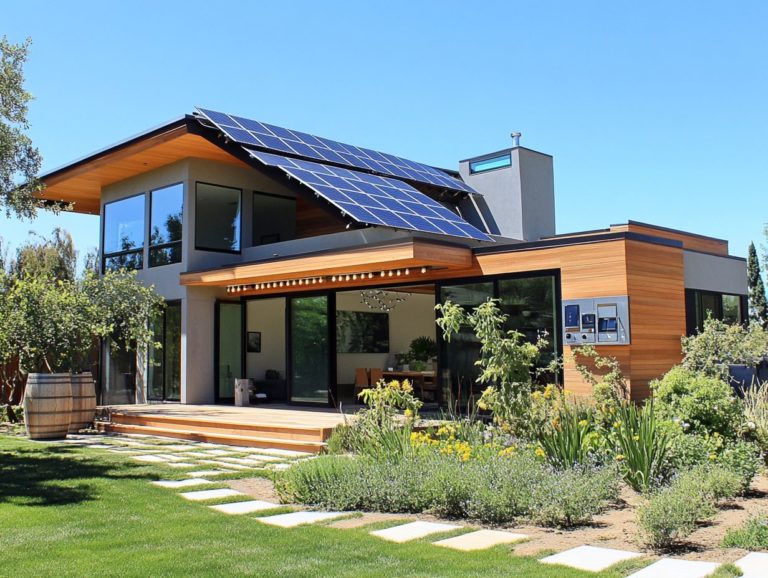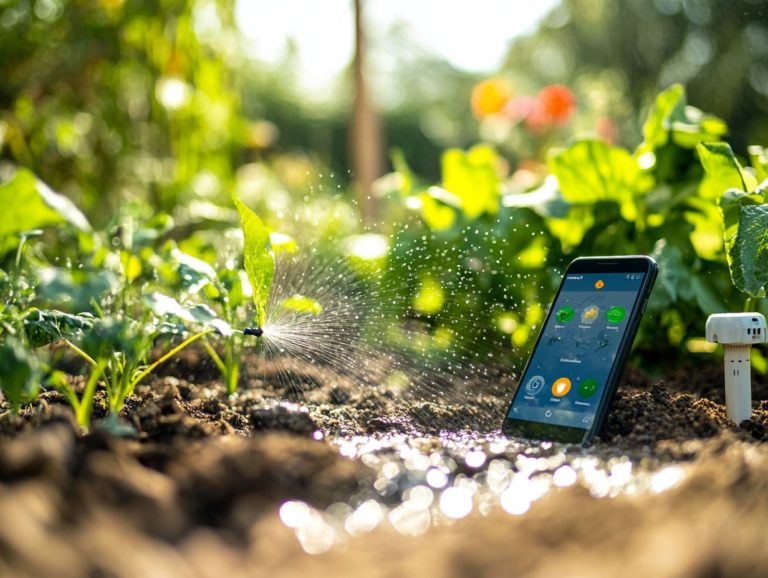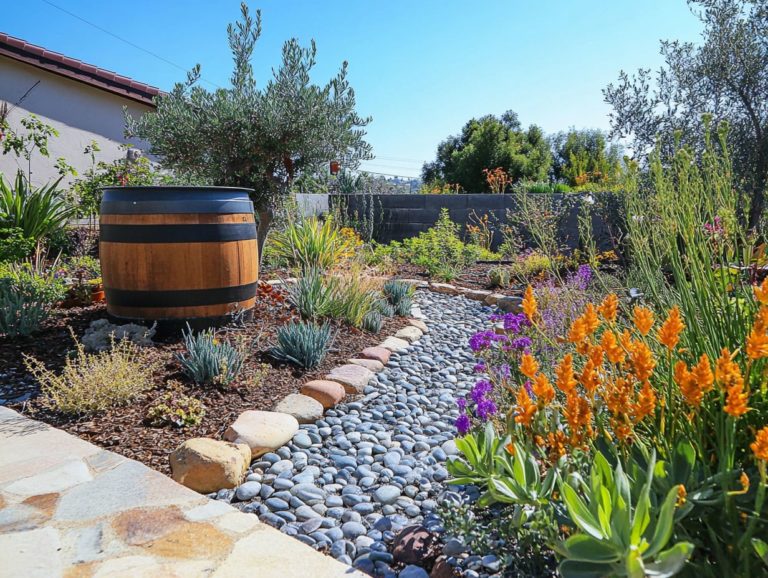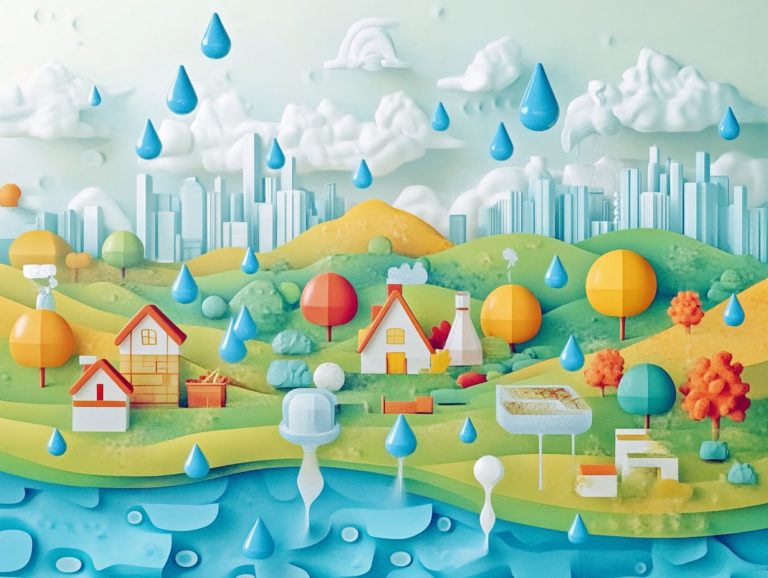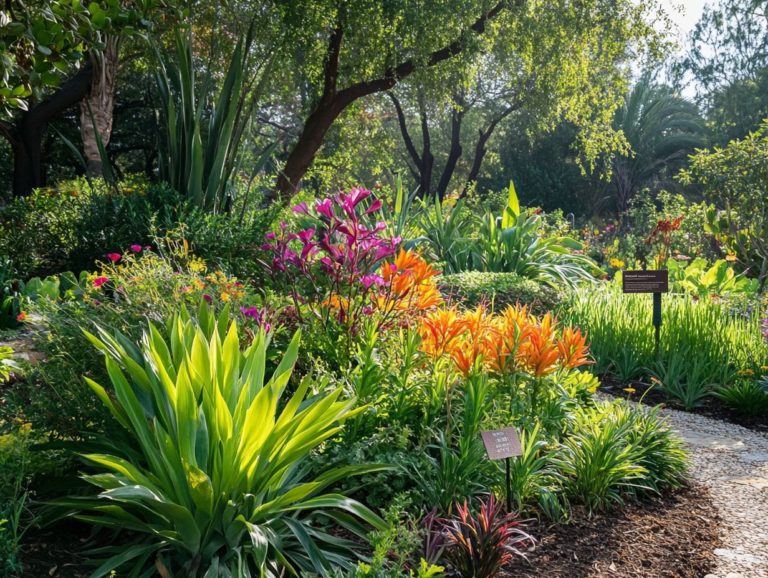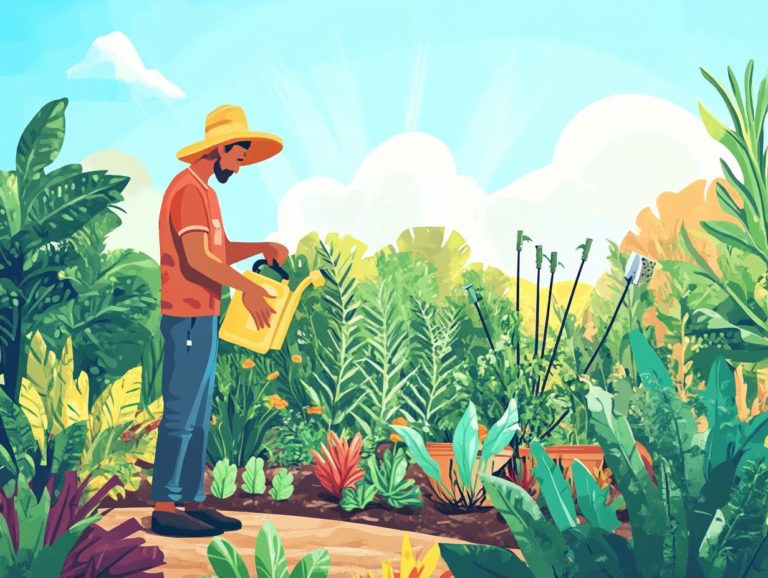How to Set Up a Water Conservation Plan
Water conservation is essential for protecting our planet s most valuable resource.
This article explores the true meaning of water conservation and its importance for a sustainable future. You ll find practical strategies for both indoor and outdoor applications.
We ll discuss how to measure progress and tackle challenges along the way. Join us in making a difference!
Contents
- Key Takeaways:
- Understanding Water Conservation
- Creating a Water Conservation Plan
- Implementing Water-Saving Practices
- Measuring and Tracking Progress
- Potential Challenges and Solutions
- Involving the Community
- Frequently Asked Questions
- What is a water conservation plan and why is it important?
- What are the key steps to setting up a water conservation plan?
- Are you curious about how to cut down on your water waste?
- What effective conservation measures can I implement?
- How can I monitor my progress towards conservation goals?
- Can a water conservation plan be tailored to fit my specific needs?
Key Takeaways:
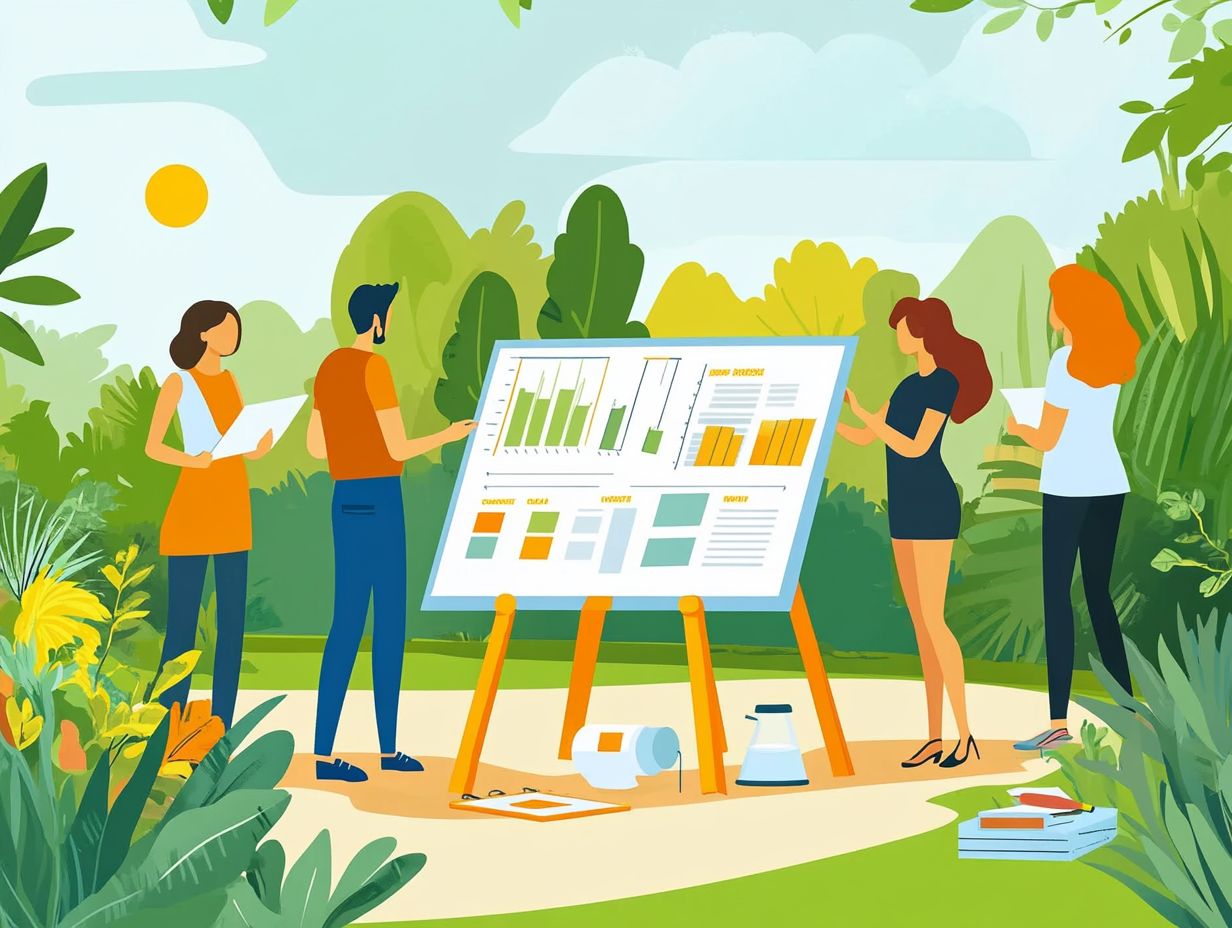
Conserving water saves resources and money while protecting the environment.
A water conservation plan involves setting goals, implementing strategies, and monitoring progress.
Engaging the community is crucial for success. Collaboration and education can help overcome challenges and promote long-term sustainability.
Understanding Water Conservation
Understanding water conservation is vital today. It includes strategies to reduce water use and ensure safe drinking water for future generations.
It s about effective management and fostering community participation in water conservation programs.
Organizations like the Texas Commission on Environmental Quality emphasize strict EPA guidelines and developing a strong conservation plan to improve water system efficiency.
What is Water Conservation?
Water conservation involves strategies to preserve water resources and improve efficiency. This includes recycling gray water, conducting water loss audits, and promoting sustainable practices in agriculture.
By analyzing your water usage, you can identify excessive consumption and implement targeted measures. Education is key in raising awareness about this vital resource.
Modern technologies like smart irrigation systems and rainwater harvesting help optimize water management.
Why is it Important?
The importance of water conservation is clear; it directly affects your access to safe drinking water, essential for health.
Effective management not only safeguards health but also sustains ecosystems and protects biodiversity.
By using water-saving methods, you can help relieve pressure on natural resources and create a healthier environment.
Economically, conserving water lowers utility bills and reduces infrastructure costs while enhancing resilience against droughts.
Socially, promoting a culture of conservation raises awareness and fosters collaboration for environmental goals.
These actions improve water quality and ensure sustainable systems for future generations.
Creating a Water Conservation Plan
Act now! Creating a Water Conservation Plan empowers you to reduce water waste and enhance efficiency by understanding the basics of water conservation.
This approach aligns with Texas Water Development Board (TWDB) requirements and helps secure financial assistance.
With this systematic plan, you can make informed decisions that benefit your operations and the community.
Assessing Water Usage and Waste
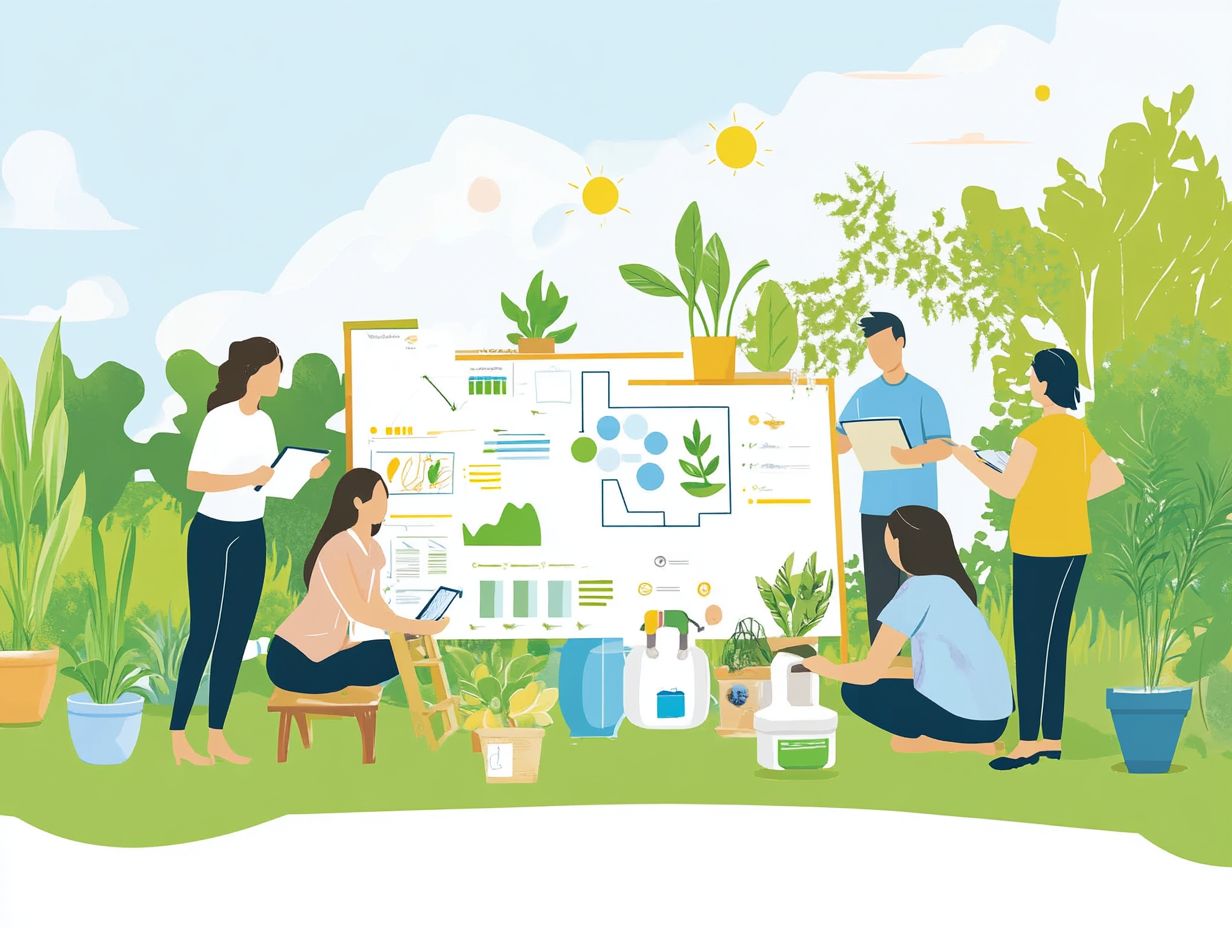
Assessing your water use is the first step. This evaluation shows your current water use.
To deepen your understanding, conducting water use surveys is essential. These surveys gather data from different areas, allowing you to pinpoint specific behaviors that contribute most to water waste.
This comprehensive approach sets the stage for targeted outreach and education efforts.
Including water loss checks in your evaluations will help you identify leaks and systemic inefficiencies within your distribution systems.
When combined with establishing a utility profile, these methods give municipalities or organizations the power to tailor their conservation strategies to their unique needs, ultimately fostering a more sustainable approach to water management.
Setting Goals and Targets
It’s time to take action by setting your water conservation goals. For effective strategies, consider learning how to use native plants for water conservation. Setting clear goals is crucial for measuring progress and ensuring the success of your Water Conservation Plan.
By analyzing baseline data, you can identify current water usage patterns and pinpoint areas that require immediate attention. This foundational step gives you the power to establish specific, measurable conservation targets that align with broader environmental objectives.
Integrating evaluation techniques throughout the implementation process enables you to make timely adjustments and enhancements.
A clear plan for setting goals makes a big difference. Make sure your targets are ambitious yet realistic to keep everyone motivated!
Ultimately, a well-structured approach to goal setting transforms your conservation efforts into tangible results that directly benefit water resources.
Implementing Water-Saving Practices
Implementing water-saving practices is an essential component of any Water Conservation Plan.
By adopting actionable strategies for both indoor and outdoor environments, you can significantly enhance water efficiency and effectively achieve your conservation goals.
Indoor and Outdoor Strategies
Indoor and outdoor strategies for water conservation can dramatically lower your overall water usage by adopting efficient practices tailored to your specific environment.
For instance, you can boost water efficiency indoors by installing water-saving appliances like low-flow showerheads and dual-flush toilets. These fixtures minimize water consumption while still delivering excellent performance.
Upgrading to high-efficiency washing machines can yield significant savings over time, too.
On the outdoor side, consider designing gardens that need less water. This approach can substantially cut down the water needed for maintaining your garden.
Implementing rainwater harvesting systems not only captures runoff for irrigation but also reduces your reliance on municipal water sources, aligning beautifully with broader conservation efforts.
By combining these methods, you cultivate a sustainable approach to water management that benefits both your household and the environment.
Measuring and Tracking Progress
Measuring and tracking your progress in water conservation efforts is crucial for evaluating the effectiveness of the strategies you’ve put in place.
This process enables you to make informed adjustments based on precise monitoring of water usage and ensures adherence to the established benchmarks.
Start your water conservation journey today by assessing your usage, setting goals, implementing strategies, and tracking your progress!
Monitoring Water Usage and Savings
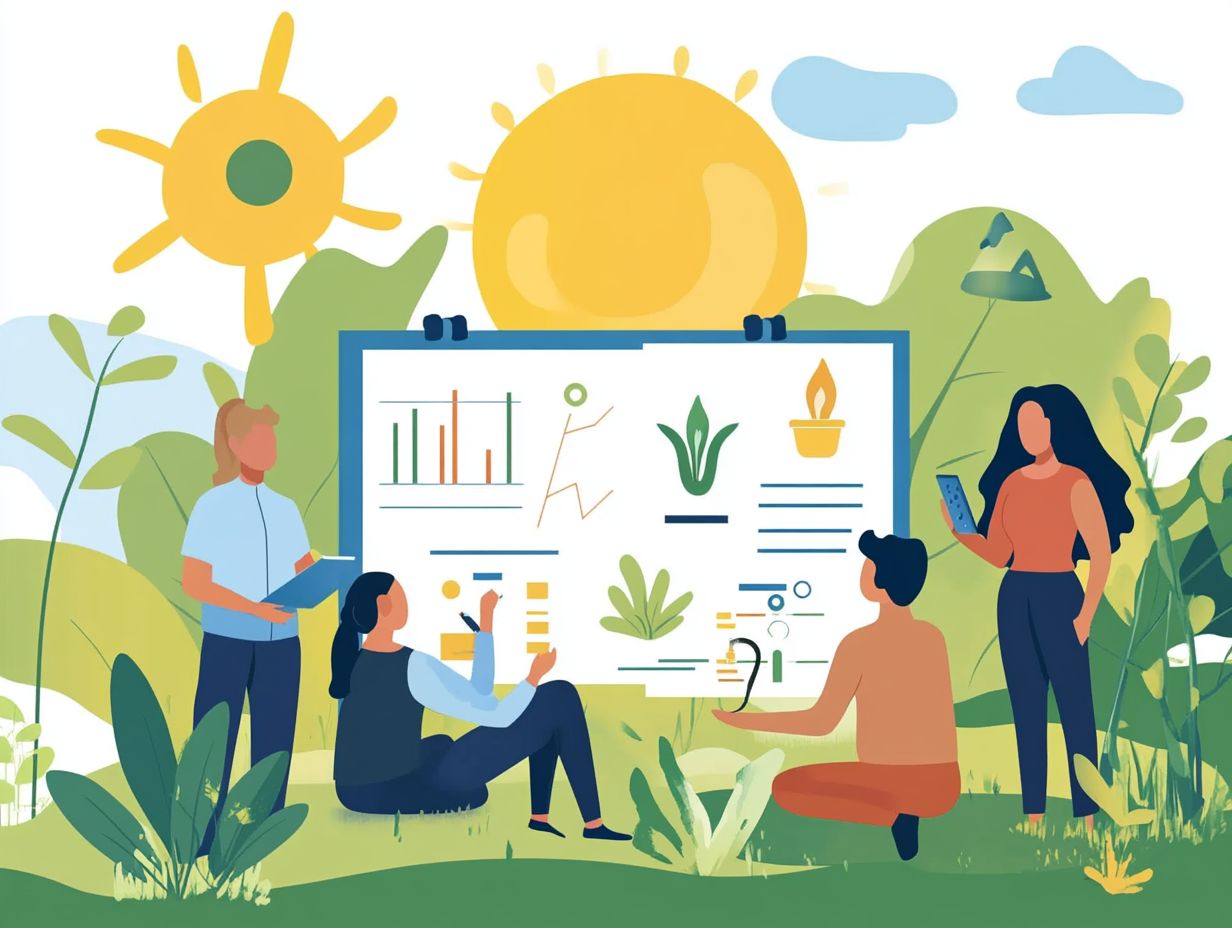
Monitoring your water usage and savings is essential for identifying trends and measuring the success of your conservation investments across various water systems.
By using advanced devices that track your water use in real-time, you can gain insights into consumption patterns and detect leaks that might otherwise go unnoticed. This data allows for a thorough analysis of water usage, revealing peak times and areas where savings can be achieved.
Utilizing tracking methods, such as user-friendly apps, empower you and your business to actively monitor water consumption. Through consistent monitoring, you can set realistic reduction targets, paving the way for effective strategies that support long-term conservation goals.
These practices help safeguard precious resources and foster sustainable habits in your daily life.
Potential Challenges and Solutions
Identifying potential challenges to water conservation is crucial for developing effective solutions.
By understanding these barriers, you empower utilities and communities to successfully adopt and implement water-saving practices.
Overcoming Barriers to Conservation
Overcoming barriers to conservation demands a comprehensive approach that secures funding while fostering community support for water-saving initiatives.
To effectively tackle these challenges, it s essential to establish partnerships with local organizations committed to environmental stewardship.
Collaborating with schools, municipalities, and non-profits can enhance your conservation efforts’ visibility within the community.
Embracing innovative tools like smart irrigation systems and rainwater harvesting empowers you and local businesses to take an active role in these initiatives.
Engaging the community in educational programs about the importance of water conservation nurtures a culture of sustainability, making it a shared responsibility among residents.
Through these collective efforts, enhancing water conservation becomes not just achievable, but a thriving reality.
Involving the Community
Engaging the community in water conservation efforts is key! It encourages proactive participation in various programs and initiatives, ensuring that everyone plays a vital role in preserving this precious resource.
Collaborating and Educating Others
Collaborating and educating others about water conservation is crucial for a cohesive strategy to implement effective water-saving practices within your community.
By forming partnerships with local schools, businesses, and nonprofit organizations, you can significantly enhance outreach and effectiveness.
Educational programs for students can impart lasting knowledge about sustainable water usage. Local businesses can lead by sponsoring events and initiatives that encourage efficient water practices.
Nonprofits also offer resources and expertise on water conservation technologies. Together, these efforts nurture a culture of conservation, aligning with broader environmental goals like reducing overall water consumption and safeguarding regional water sources, ultimately contributing to a healthier ecosystem.
Frequently Asked Questions
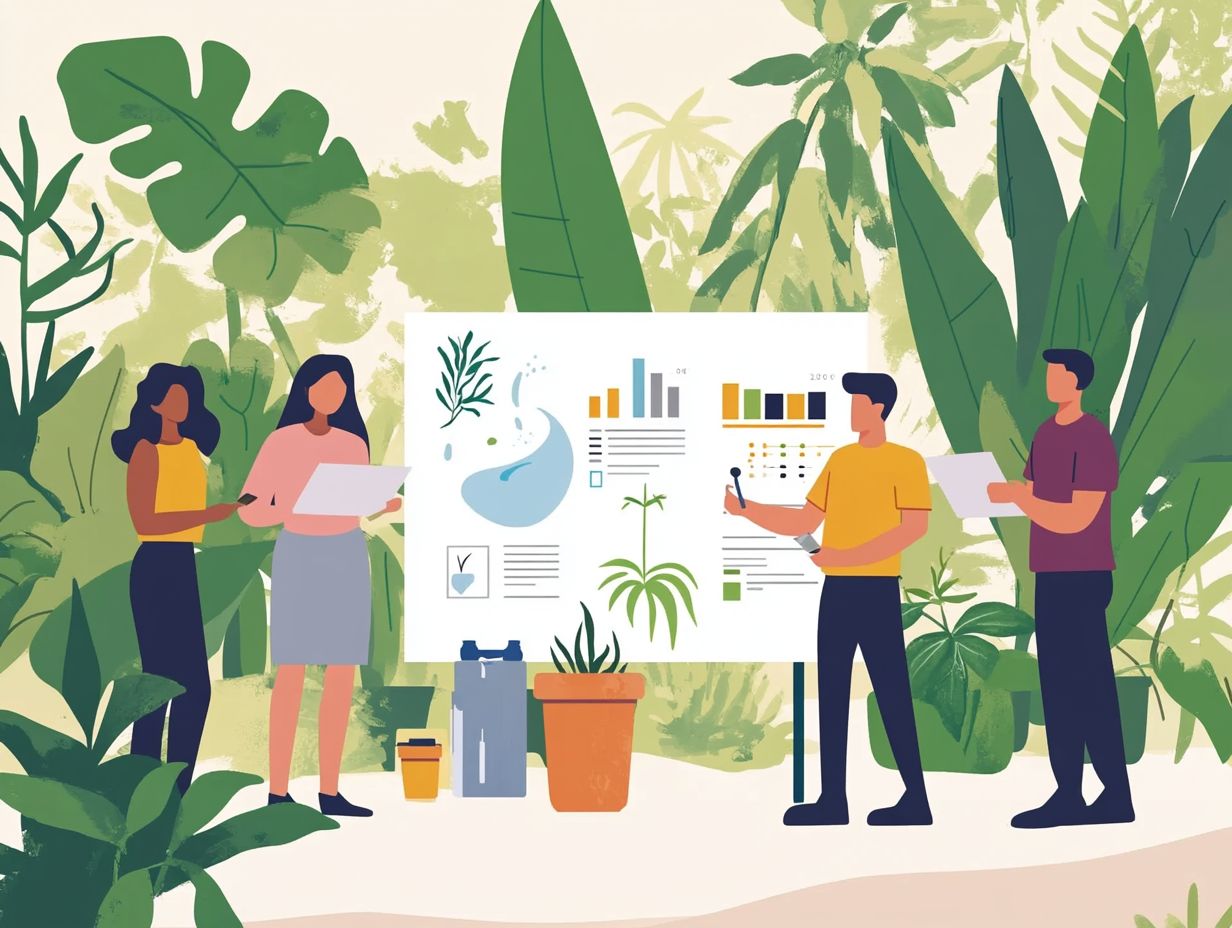
What is a water conservation plan and why is it important?
A water conservation plan is a set of strategies to reduce water use. It s important for protecting our water resources for everyone.
What are the key steps to setting up a water conservation plan?
The key steps include assessing your current water usage, identifying areas for improvement, setting specific goals, implementing conservation measures, and understanding water conservation policies and regulations, monitoring progress, and making necessary adjustments.
Are you curious about how to cut down on your water waste?
How can I assess my current water usage?
Start by reviewing your water bills to see how much water you are using. Conduct a thorough inspection of your home or business to identify areas where water is wasted, like leaky faucets or irrigation systems.
What effective conservation measures can I implement?
Some effective measures include fixing leaks, using devices that use less water than standard fixtures, installing water-efficient appliances, practicing smart landscaping, and educating yourself and others on water-saving habits.
How can I monitor my progress towards conservation goals?
Monitor your progress by checking your water bills regularly. You’ll be amazed at how your efforts can lead to lower usage! Keep track of the conservation measures you have implemented. You can also conduct periodic inspections to ensure all fixtures and systems are functioning properly.
Can a water conservation plan be tailored to fit my specific needs?
Yes, a water conservation plan can be customized to fit your specific needs and circumstances. You might focus on your garden irrigation or indoor water use. To get started, consider how to transition your home to a water-efficient design. Prioritize the areas of water usage that matter most to you and your community, and choose the conservation measures that are feasible and effective for your situation.

